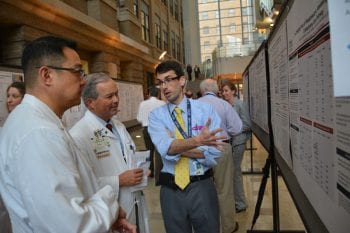Our Approach

The work of academic medical centers to improve patient outcomes has been an evolution since the beginning of modern medicine and surgery in the early 20th century. The Department of Surgery has played a significant role in this process through basic science research, the introduction of life-saving surgical techniques, the study of causes that contribute to disease and multiple quality improvement efforts.
In recent years, the effort to improve outcomes has taken on greater urgency as surgeons, like other physicians, are called to take further steps: reduce medical errors and unsafe hospital practices, shorten lengths of stay, decrease readmissions and lower costs.
The department maintains its commitment to surgical science, but also focuses on public health, clinical effectiveness studies and other activities that translate into improved patient safety and better outcomes. It also embraces quality improvement efforts that include:
- Enhancing surgical recovery
- Improving operating room and ICU communications
- Identifying and documenting pre-existing conditions
- Decreasing readmission rates
- Improving practices after a reported safety event
- Reducing costs
As these efforts continue, we have seen significant improvements in mortality, readmissions and length of stay. Our surgeons, nurses and other staff enable our department to always move forward, improving both care quality and patient safety.
2016
Quarter 3 0.88 Quarter 4 0.82
2017
Quarter 1 0.75 Quarter 2 0.79 Quarter 3 0.79 Quarter 4 0.70
2018
Quarter 1 0.77 Quarter 2 0.79
